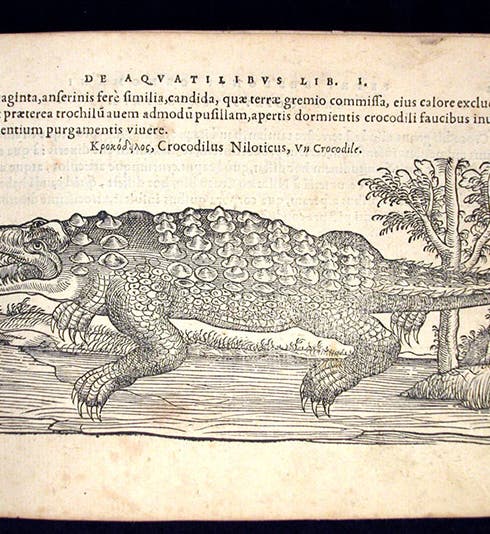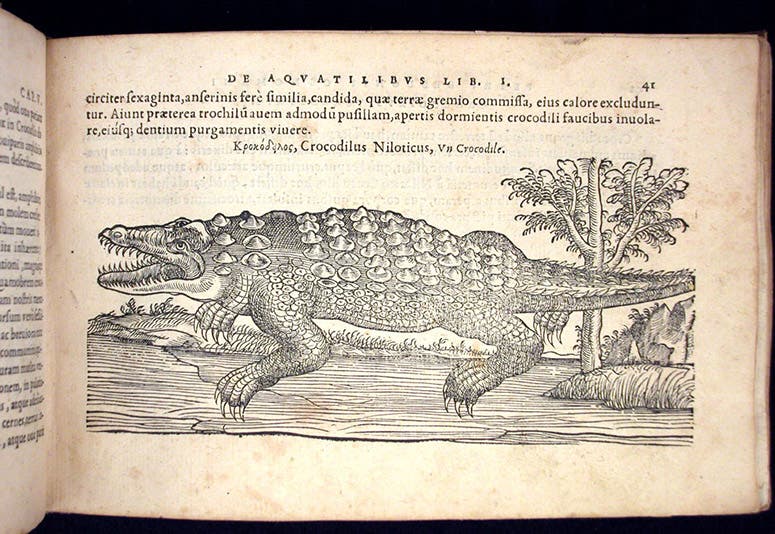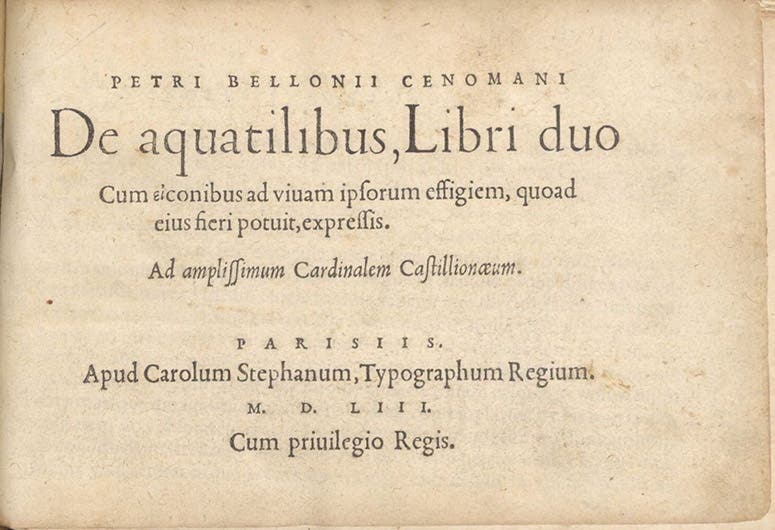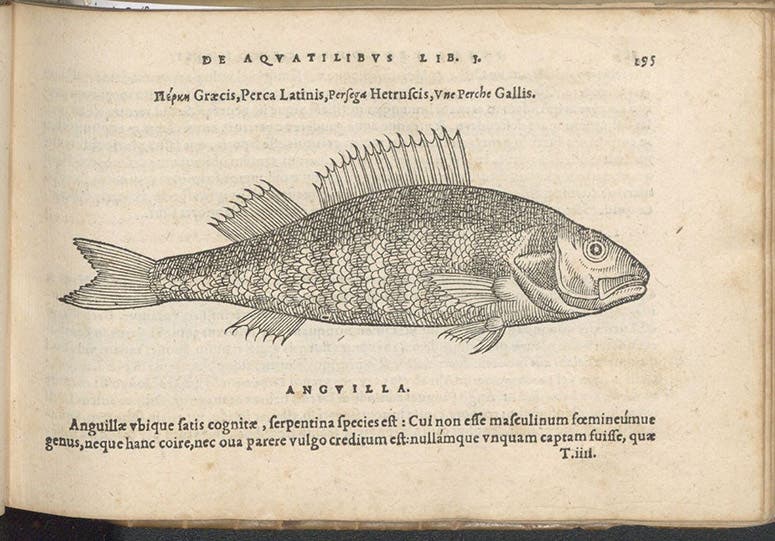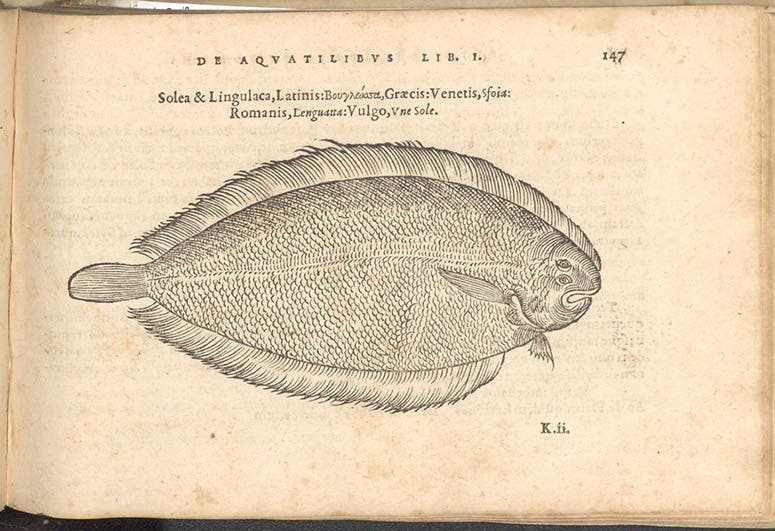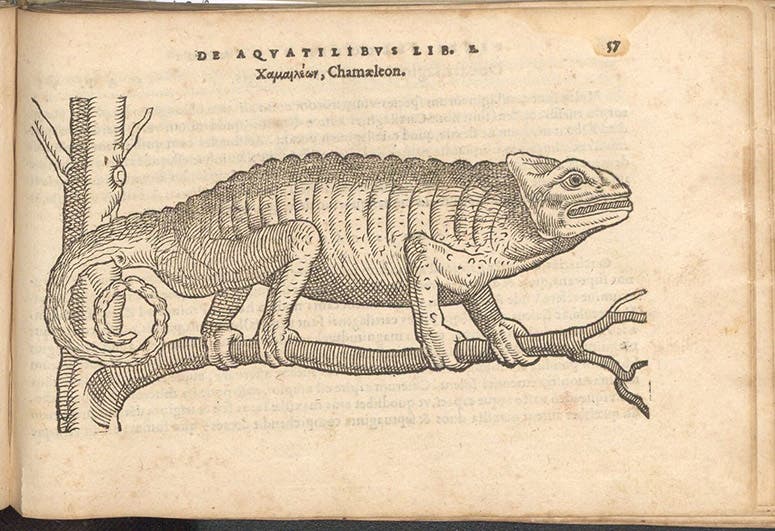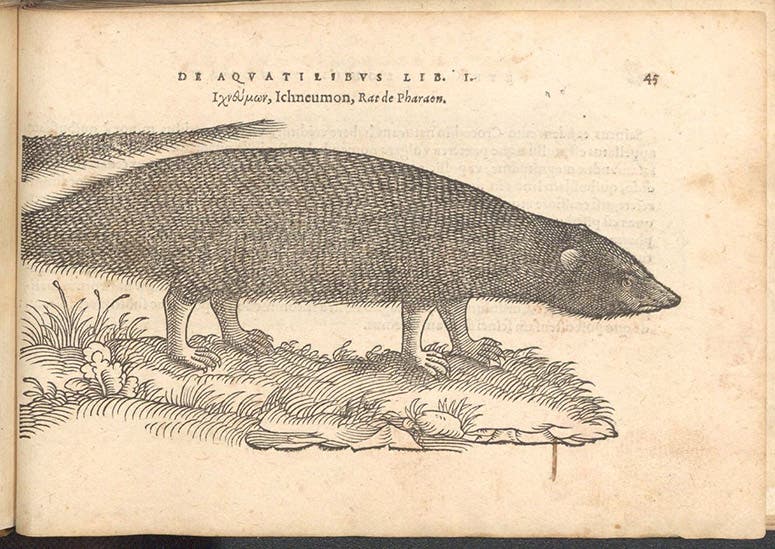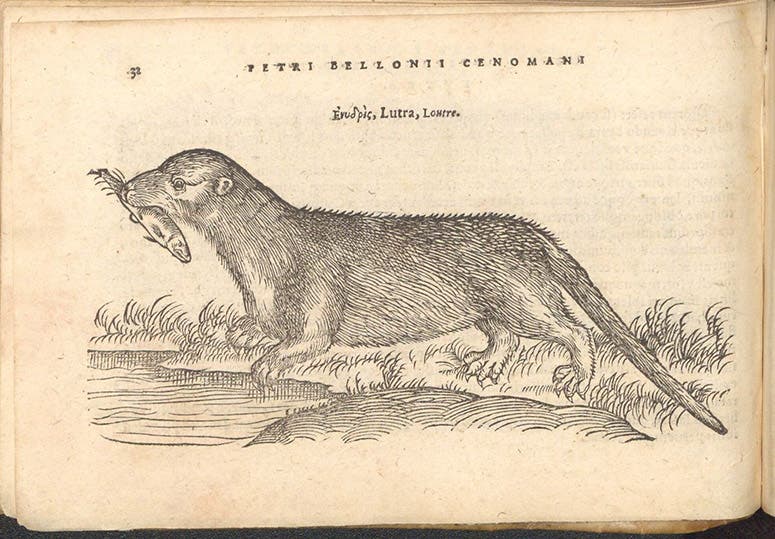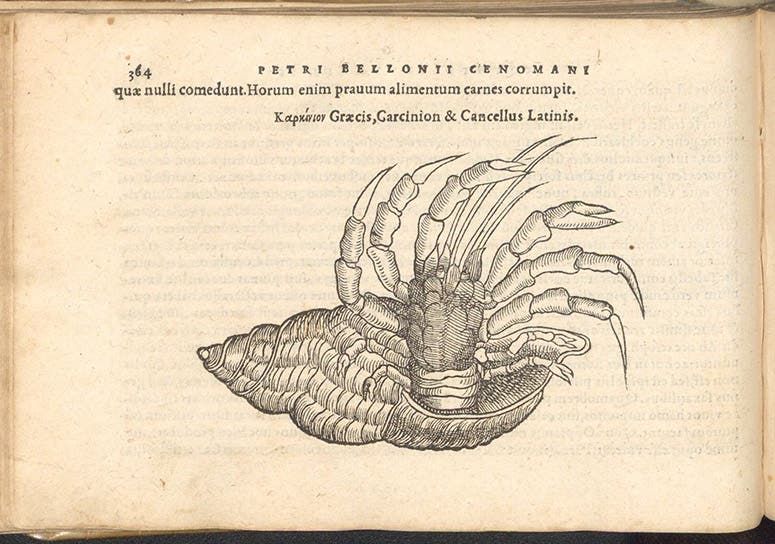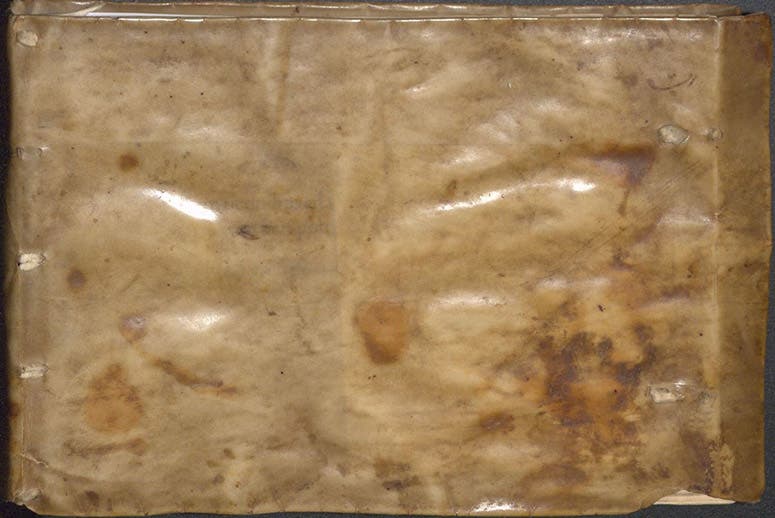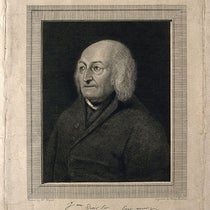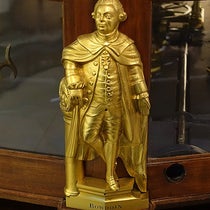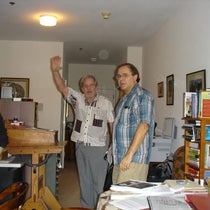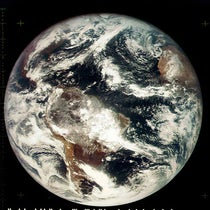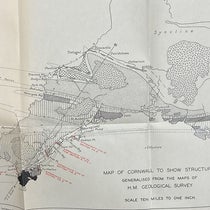Scientist of the Day - Pierre Belon part 2
We introduced Pierre Belon yesterday, with a post on his first book, L'histoire naturelle des estranges poissons marins (1551), and a brief comparison of his approach to natural history with that of Conrad Gessner. We continue, with a focus on his second (or perhaps third) book, De aquatilibus (On water animals, 1553).
This is a remarkable publication, not least for its oblong octavo format, a shape not often seen in Renaissance books. But, of course, that is the perfect shape for a book on fish, especially if you intend to include images, as Belon did. I did not count them, but there must be nearly one hundred woodcuts in its 448 pages, depicting everything aqueous from perch to sole. The woodcuts are simple but accurate, allowing historians of ichthyology to identify most of them right down to the species. That would not be the case for any other book on animals published before 1550.
If you leaf through the book, you will immediately notice many illustrations that would not be found in a modern book on fish. For this is a book about water animals, and defined that way, it can and does include otters, hippopotami, crocodiles, crustaceans (such as the hermit crab), and even a shell of a purpura whelk, which was the source of Royal Purple dye.
I am not sure what stretch of the imagination allowed Belon to include a chameleon as a water animal, but it is one of the most remarkable of all the woodcuts in the book (fifth image). The chameleon was an emblematic animal, so it had been depicted dozens of times before, in emblem books, but always inaccurately, especially in the way it grasps the branch it stands on. Belon got it exactly right, down to the placement of the individual toes, indicating that he made his drawing from a real perching animal. This should not surprise the reader, for the full title of his book proclaims that it contains images drawn from life.
The other image that has always intrigued me is that of the Egyptian mongoose, or ichneumon (sixth image). Belon (or his woodcutter) did a marvelous job of rendering the animal’s wet fur by crosshatching the woodcut. But the tail was too long to fit on the page, so it was cut off and stuck on above. Or did it curl up that way, with only the curl being trimmed away? No one knew, so later authors who copied this woodcut (like Gessner in his later volumes) left the tail hanging in the air, since they didn’t know how it was attached. You can see Gessner’s pre-Belon ichneumon, and his later copy from Belon, in our first post on Gessner. You can also see, in the same post, how he copied Belon’s chameleon.
We mentioned above that we were not sure if this was Belon’s second or third book, because he also published, in 1553, a travel book about his journeys through Egypt and the Holy Land, called Les observations de plusieurs singularitez. It contains several of the same woodcuts as De aquatilibus, such as the chameleon and ichneumon. Because the book is larger and in conventional format, there would have been no reason to lop off the ichneumon’s tail, so I assume that the woodblock was cut for the fish book first, and then reused for the Observations. We have a copy of the Observations in our collections, but I doubt that we will discuss it further in this forum, for we have yet to encounter the book for which Belon is best known, his Histoire de la nature des oyseaux (1555), which we will engage in our next Belon post, sometime later this year.
We rarely have the opportunity to include book bindings in these posts, because priority is given to the printed images within, but we thought we would show you the binding for our copy of Belon’s De aquatilibus. It is a limp vellum binding, meaning the covers are flexible, and probably near original, so that it is not too far short of being 500 years old (ninth image). It is lovely to look at, and to touch.
William B. Ashworth, Jr., Consultant for the History of Science, Linda Hall Library and Associate Professor emeritus, Department of History, University of Missouri-Kansas City. Comments or corrections are welcome; please direct to ashworthw@umkc.edu.

